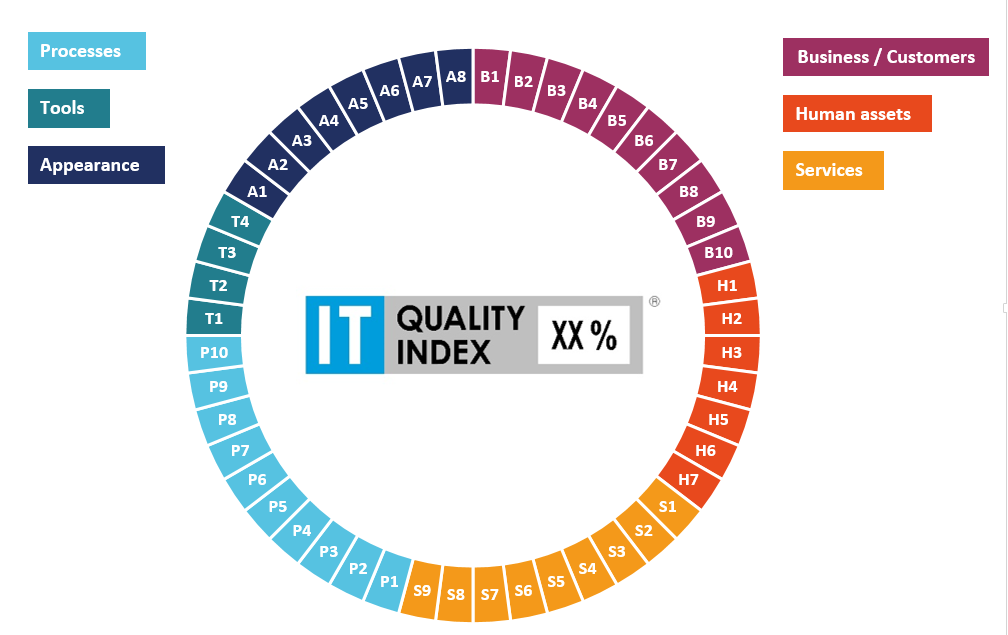During last week I delivered an expert level training course of the IT QUALITY INDEX framework in some excellent training premises near to Tower Bridge. Here is my summary of what I took away from it.
Strategic thinking
Through delivering courses in the ITSM domain to different types of an audience I realise more and more that the strategic way of thinking is not entirely obvious to everyone and this provides a great challenge for the trainer to explain. The IT QUALITY INDEX framework is focused on a strategic level measurement of the quality of the whole of IT. My experience suggests that 90% of people working in IT have a predominantly operational view of the world around them. This means that they pay attention to the most visible attribute of a part of the system and see it as a representation of the properties of the whole system i.e. The decline in a KPI, such as the % of requests resolved within SLA, in their eyes indicates an overall drop of IT quality. But, they did not look at the other attributes of other parts of the system as this is not easily accessible to them i.e. Such as a change in the change process flow.
Many people in IT work on this operational level and never face a situation that requires strategic thinking or even taking decisions with long term implications or major consequences. Changing their mind set is not easy and the IT QUALITY INDEX Foundation course can be a good way to accomplish this change.
The expert level course though is targeted towards experienced IT professionals who see the whole rather than a sum of the individual parts.
When planning the course we decided to choose the training center of QA located near to Tower Bridge with a great view over London’s historic center. As some participants told me after the course, they did get the message and remember the strategic dimension of the IT QUALITY INDEX.

Holistic
In the course, we explain the IT QUALITY INDEX model, domains, dimensions and attributes. We found that the visualisation of the quality dimensions in a circle, showing that there is need to look at IT through all angles – business perspective, human assets, services, processes, tools, appearance (quality domains) – proved very useful for participants understanding of the framework. When we start discussing the word “holistic” many people do not understand the meaning of the term, so some non IT examples were required. Similar to strategic thinking, certain types of individual get it easily and others require a little more explanation.

Regression
When explaining the five principles of the IT QUALITY INDEX I found the explanation of the Regression principle the most challenging. In simple terms, when analysing the actual levels of all 48 quality domains the assessors (judges) tend to evaluate “at this point of time“ quality levels while the Regression principle looks at a longer time perspective, from around the last 6 months. This means the smoothening of quality increases and degradations of every quality dimension due to the normal fluctuations and variations within every IT department i.e. A newly launched project focused on building the knowledge management process does not mean that a high-quality level is achieved in the assessment, but the overall quality level will be properly represented in the next IT QUALITY INDEX measurement.
Conclusion
The whole course is focused to explain and to teach the participants what IT quality is and how it could be measured. For those who are considering using the IT QUALITY INDEX actively consideration should be given to personality types, management experience and maturity. On this course, I had the opportunity to meet with these people and moreover, they provided me with some great examples from their organisations.